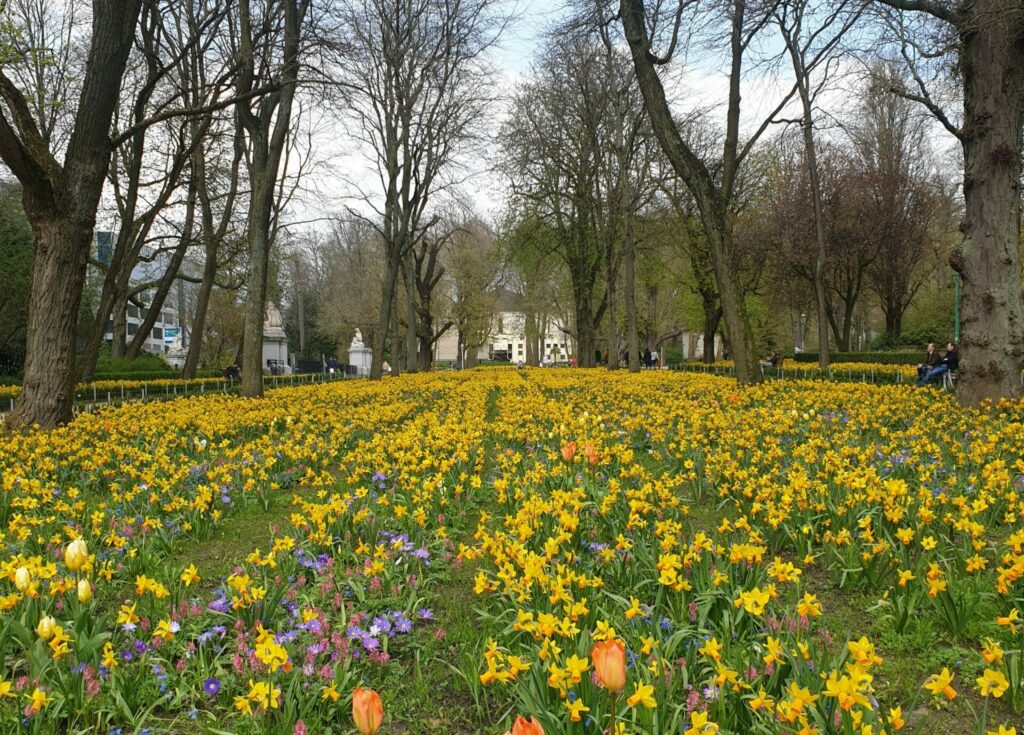Last Brussels' 2022-2023 winter planting season has come to an end. The result: hundreds of new trees and thousands of new flowers and shrubs.
After months of grey and a lack of green across Brussels, it seemed in recent weeks that the long-awaited burst of colour in the form of plants finally arrived. From one week to the next, several areas were transformed into urban oases.
For Brussels Mobility, the administration in charge of maintaining public spaces and which monitors the state of health of 36,500 trees in the region, the winter is the peak season for the maintenance of plants and adding new ones.
During last winter's planting season, which focused on biodiversity, the organisation planted 910 new trees, 25,000 shrubs and 50,000 perennials, which, unlike annuals, live for more than two years.

Credit: Brussels Mobility
"Nature is essential, both to improve the quality of life of Brussels residents and to make our region more resistant to climate change. Many Brussels residents do not have a garden and they too are entitled to a place to recharge their batteries, meet people and find coolness in summer," said Elke Van den Brandt, Brussels Minister for Mobility and Public Works.
She explained that the region is "systematically investigating" all the places where new plants can be added, "because every tree, every plant counts." By providing some 20 new species, including those with fragrant flowers, the administration is hoping to increase the region's biodiversity.
Improving public spaces
Brussels Mobility also oversees several projects that improve public spaces and makes them more enjoyable for residents to stay in them rather than simply pass through. Last winter, an area of 2,600 m² of flowerbeds was improved or replanted across the region.
This included works on the Jules de Trooz square in Laeken where perennials, shrubs and bulbous plants were added to flower beds, as well as the refurbishment of the dolomite paths and restoration of the basketball court. On the European Parliament Esplanade, grasses were planted in the granite tubs on the esplanade.
In line with the region's new spatial legislation Good Living, Brussels Mobility is also running local projects that increase soil permeability and improve the management of run-off water by "softening" the ground.
It also uses wood chips from the pruning of the trees on the large-scale avenues in the city as mulch, a layer of material applied to the surface of the soil to protect it. Currently, this accounts for more than 700 m³ of circular wood chips.

